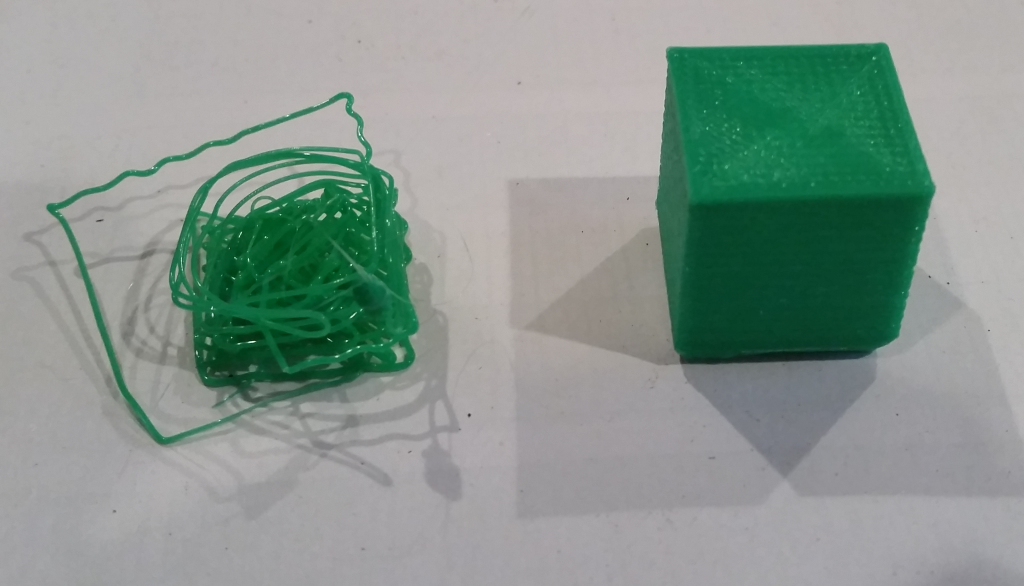A few days ago, Niantic (of Ingress fame vague familiarity) unleashed Pokémon Go on the world.
If you’ve been living under a rock for the past week, Pokémon Go is the latest phase of the popular Japanese Pokémon (“Pocket Monsters”) franchise, which has been around since the late 1990s. The twist with this latest version, though, is that it uses real-world places as the playing field for the game. Players walk around their neighborhoods, searching for virtual Pokémon that the game superimposes on the real world.

Ran across this guy (turned out to be something called a Grimer) on campus. There are some weird ones out there!
It’s perhaps the first truly popular Augmented Reality (AR) game — and judging from the overwhelmingly positive response, it’s leading the way to a whole new genre of gaming that has the potential to completely reshape what we think of gaming.
Like any nascent paradigm shift, though, Pokémon Go and similar AR games are not without their potential hazards. Here are my thoughts — on the good and bad — after an evening or so playing Pokémon Go.
It gets geeks like me out and about
This is probably the biggest point in the game’s favor. You progress in the game largely by walking around. Whereas more traditional games like Skyrim have sometimes been criticized as “walking simulators,” there’s nothing simulated about the walking Pokémon trainers are doing, tracking down that elusive, rare … seventeenth Ratatta in a row.
It teaches you local geography and history
Pokéstops — important nodes in the game where you can obtain items for free — correspond to points of interest on Google Maps. It’s unclear exactly how these points were chosen, but churches seem to be favorite slots, as do many of Philadelphia’s murals. I’ve learned perhaps half a dozen interesting things about Mantua, Powelton Village, and West Philadelphia in general just by playing.
…as long as you watch where you’re going
I strongly recommend playing in a safe area. Many people have commented how college campuses are awesome places to play. Presumably they were talking about the proximity of so many players (with lures, etc) to points of interest. However, another good reason to play on campus is because of the security. If you’re walking around, keeping out of traffic, and trying to find that Pikachu that someone said was over on this side of town, you’re probably not as aware of all of the people around you as you should be — and not all people are to be trusted. It’s important not to become a smartphone zombie. Stick your head outside your digital bubble and look around once in a while. Watch your six.
…and if the servers aren’t on fire.
I feel sorry for whomever Niantic contracted to for their data services. Because from the look of things client-side, their data centers are probably about to melt through the floor. Quite a few of the people I saw outside — possibly as many as 10-20% — were also playing. There’s no question it’s very popular. So much so, that people have set up websites tracking whether the servers are currently up or down.
Some of the dynamics raise security concerns
Players walk around in the real world while playing. They are free to go wherever they choose — but obviously, some directions are going to have more points of interest than others. It’s also possible to track down Pokémon in your area by looking for “rustling leaves” on the screen.
So these Pokémon — as well as points of interest — are influencing where people are going, perhaps without the people being aware. (I found myself walking down a route I hadn’t taken before, and realized I was walking along Powelton Ave, when I usually just cross over it northbound.)
Businesses are already catching on to this, advertising that they are Pokéstops or perhaps offering discounts to customers who set up lure modules on the local node. Or they play and set up a node there, themselves, in order to draw customers who will sit and play as they eat.
There have also, of course, been reports of muggers setting up lures, hoping to draw victims to them. How apropos.
This could be an insanely effective way to crowdsource searching for something.
Pokémon Go is a dramatic example of the power that games have to get people to do things. (I mean, come on. I walked to work and back even though I was done working — from home — for the day.) Imagine what such a game could do, if people were scored on types of wildlife they photographed, or number of potholes they reported, and so on. Crowds of people could be out there, looking for actual useful data instead of pocket monsters.
Pokémon Go is one of the more thought-provoking games I’ve come across. Ingress, also by Niantic, was another — but they’ve done a much better job with implementation this time.
A few tweaks — some major, some minor — would greatly help the experience, though:
- Maybe perhaps buy a second server. Just sayin’.
- Instructional videos on what constitutes a good Pokéball toss would be very helpful. A lot is lost in the 2D-3D transition.
- Why all the emphasis on fighting? People are getting in real-life fights over this. I’m having fun just collecting the little critters.
- The Pokémon transfer mechanism needs to be speeded up. Let us look at all of the stats of the Pokémon we’ve captured, and check which ones we want to transfer, rather than having to dig through each slow-loading screen individually and then scroll down past the map which loads halfway there, slowing things down.
I would consider the game to be mid-to-late beta at this point, mostly because the servers are not yet up to handling the game’s unexpected runaway popularity. It’s still a lot of fun to play as long as you watch what you’re doing. And it’s certainly a harbinger of a whole genre of interesting AR games to come.
Go Team Mystic!




